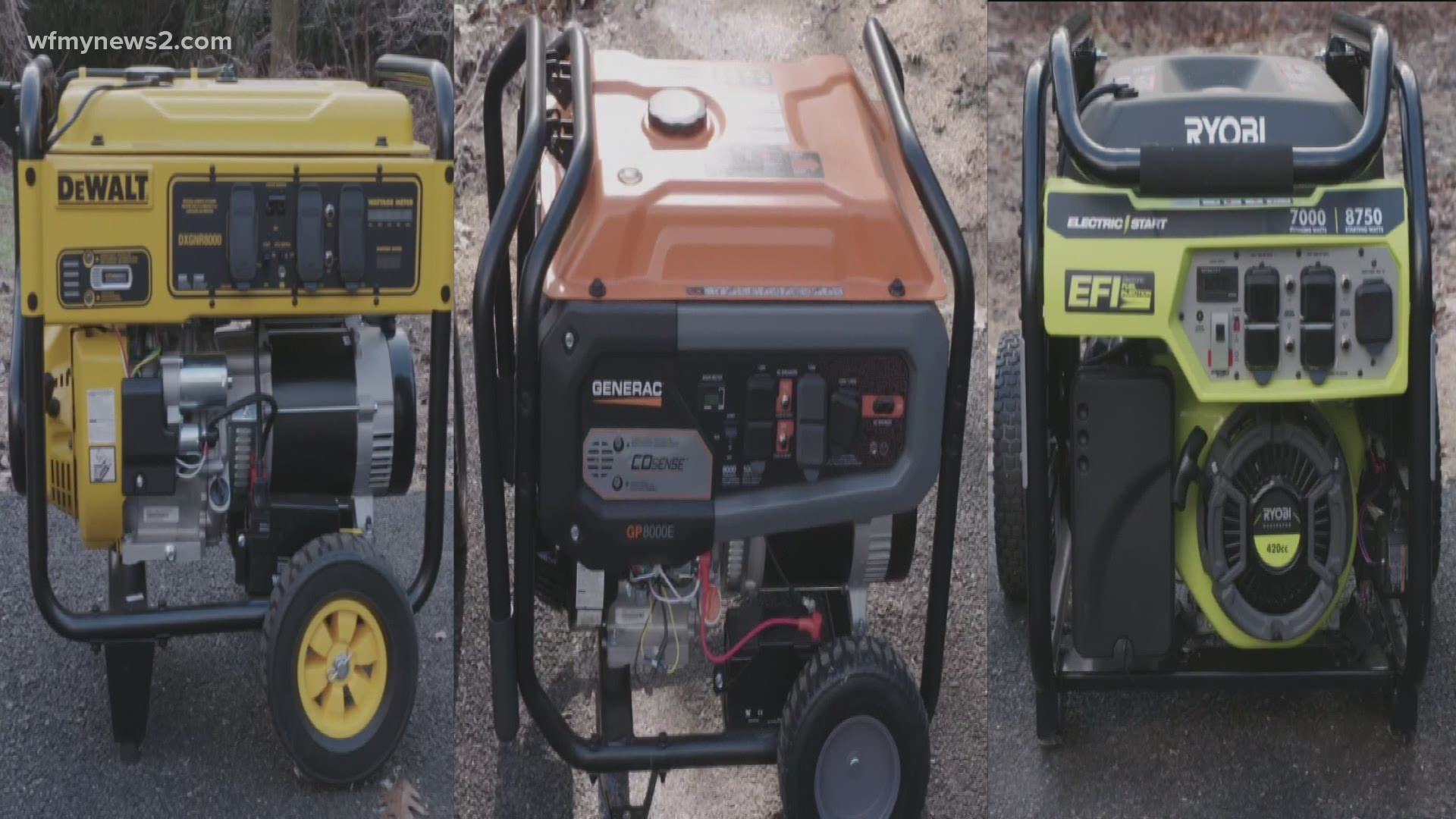GREENSBORO, N.C. — No power for 24, 48, or 72 hours will have you thinking about investing in a generator. You certainly wouldn't be alone. WFMY News 2 took a picture of the bare shelves at a Home Depot in Greensboro Sunday. An online search for a generator brought up a few at stores like ACE Hardware, but Lowe's & Home Depot would need to order a generator and get it to you by next week.
Really, you're not buying the generator for this power outage, it's almost all over. But there will a next one. So, here's what you need to know about generators:
The Consumer Product Safety Commission says that from 2005 to 2017, more than 900 people died of carbon monoxide poisoning while using portable generators.
A generator should never be used inside or even in the doorway of an enclosed space. To reduce the risk of carbon monoxide poisoning, some new generators feature a built-in sensor that triggers an automatic shutoff if CO gas builds up to dangerous levels in an enclosed space, like a garage or carport. And some portable models are now designed to emit less CO in the first place.
In 2019, Consumer Reports tested five portable generators with automatic shutoff. All of them passed CR’s new CO safety technology test, shutting down before carbon monoxide reached specified limits in an enclosed chamber.
CR will now only recommend portable generators with automatic shutoff for dangerous levels of CO. Each manufacturer has a different name for its shutoff system. So if you’re shopping for a new generator, look for such terms as “CO Shield,” “CO Sense,” “CO Guard,” “CO Protect,” and “CO Detect.”
CR recommends these:
The Ryobi model RY907022FI for $1,150 has an automatic shutoff and low CO output.
Testers gave it excellent scores for power delivery.
The DeWalt model PMC168000 for $1,050 received excellent marks for power delivery
and maintains its voltage well.
The Generac model 7675 for $1,000 has good power quality and features a helpful fuel
gauge.
All three have five power outlets and will run for 8 to 17 hours on one tank of gas, depending on the power level.
It’s worth repeating: NEVER operate a portable generator indoors, even with a door open. In addition, CR says you should ALWAYS follow these safety rules: Always place the generator at least 20 feet from your house, make sure in advance that you have a generator power cord that’s long enough to reach, and always direct the exhaust away from any occupied space so that carbon monoxide isn’t blown toward living spaces.

